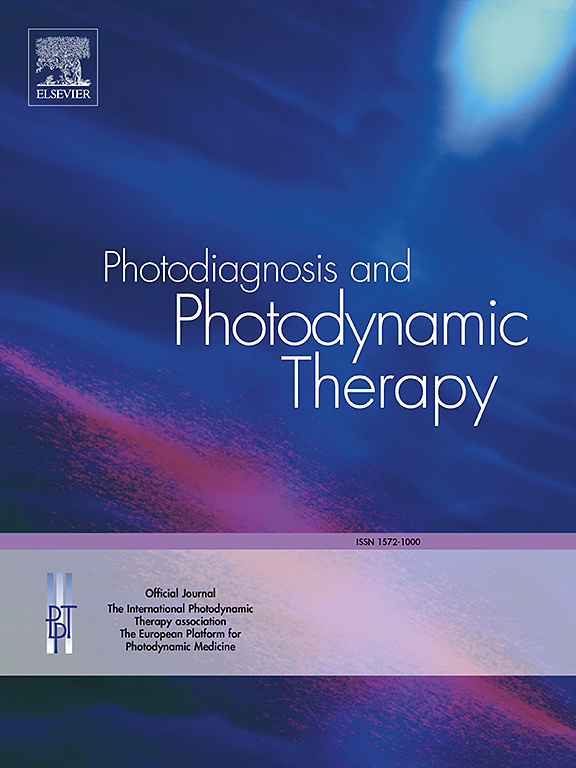低水平激光治疗颌面部神经病变的疗效观察。随机对照试验的系统综述。
IF 3.1
3区 医学
Q2 ONCOLOGY
引用次数: 0
摘要
目的:本研究旨在评估低水平激光治疗(LLLT)治疗颌面部神经病变的有效性和安全性,重点是减轻疼痛,神经功能恢复和组织再生。方法:系统检索PubMed、Web of Science、Scopus和EBSCO数据库,检索截至2024年12月关于颌面神经病变LLLT的英文、西班牙文和葡萄牙文出版物。随机对照试验(RCTs)纳入了使用LLLT治疗的感觉异常、神经痛或面瘫患者。数据提取和偏倚风险评估由两名独立审稿人进行,并对结果进行定性和定量综合。结果:从最初的841项研究中,18项随机对照试验(rct)包括1220例患者符合纳入标准。LLLT显著降低了视觉模拟量表(VAS)的疼痛评分(平均降低 = -3.5,95% CI: -4.2至-2.8,P )结论:低水平激光治疗是治疗颌面神经病变的一种有效且安全的方式,在疼痛减轻、神经恢复和组织愈合方面显示出显著的益处。标准化方案和多中心试验是优化其应用的必要条件。本文章由计算机程序翻译,如有差异,请以英文原文为准。
Effectiveness of low-level laser therapy in patients with maxillofacial neuropathies. A systematic review of randomized controlled trials
Objective
This study aimed to evaluate the effectiveness and safety of low-level laser therapy (LLLT) in managing maxillofacial neuropathies, with a focus on pain reduction, neurological recovery, and tissue regeneration.
Methods
A systematic search of PubMed, Web of Science, Scopus, and EBSCO databases was conducted for English-, Spanish-, and Portuguese-language publications on LLLT for maxillofacial neuropathies up to December 2024. Randomized controlled trials (RCTs) involving patients with paresthesia, neuralgia, or facial paralysis treated with LLLT were included. Data extraction and risk-of-bias assessments were conducted by two independent reviewers, and results were synthesized qualitatively and quantitatively.
Results
From an initial pool of 841 studies, 18 RCTs involving 1,220 patients met the inclusion criteria. LLLT significantly reduced pain scores on the Visual Analog Scale (VAS) (mean reduction = –3.5, 95 % CI:4.2 to –2.8, P < 0.001) and facilitated a 45 % faster recovery of sensory thresholds compared to controls (P < 0.001). Tissue regeneration markers, including collagen deposition and epithelialization rates, improved, resulting in a 25 % reduction in healing times (P < 0.05). Mild adverse events, such as transient erythema, were reported in <5 % of cases. Variability in laser dosimetry and small sample sizes across studies were noted.
Conclusion
Low-level laser therapy is an effective and safe modality for managing maxillofacial neuropathies, demonstrating significant benefits in pain reduction, nerve recovery, and tissue healing. Standardized protocols and multicenter trials are necessary to optimize its application.
求助全文
通过发布文献求助,成功后即可免费获取论文全文。
去求助
来源期刊

Photodiagnosis and Photodynamic Therapy
ONCOLOGY-
CiteScore
5.80
自引率
24.20%
发文量
509
审稿时长
50 days
期刊介绍:
Photodiagnosis and Photodynamic Therapy is an international journal for the dissemination of scientific knowledge and clinical developments of Photodiagnosis and Photodynamic Therapy in all medical specialties. The journal publishes original articles, review articles, case presentations, "how-to-do-it" articles, Letters to the Editor, short communications and relevant images with short descriptions. All submitted material is subject to a strict peer-review process.
 求助内容:
求助内容: 应助结果提醒方式:
应助结果提醒方式:


